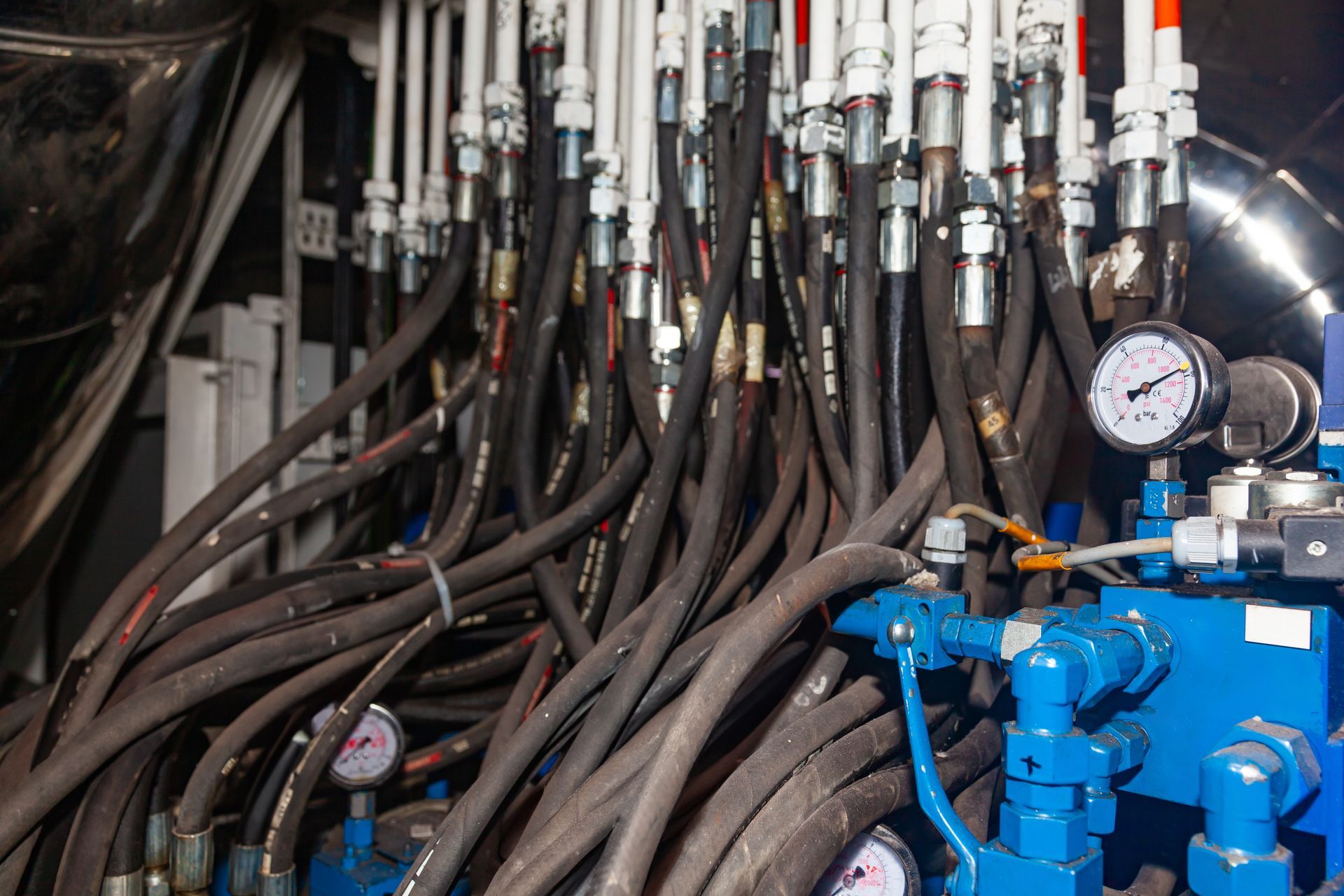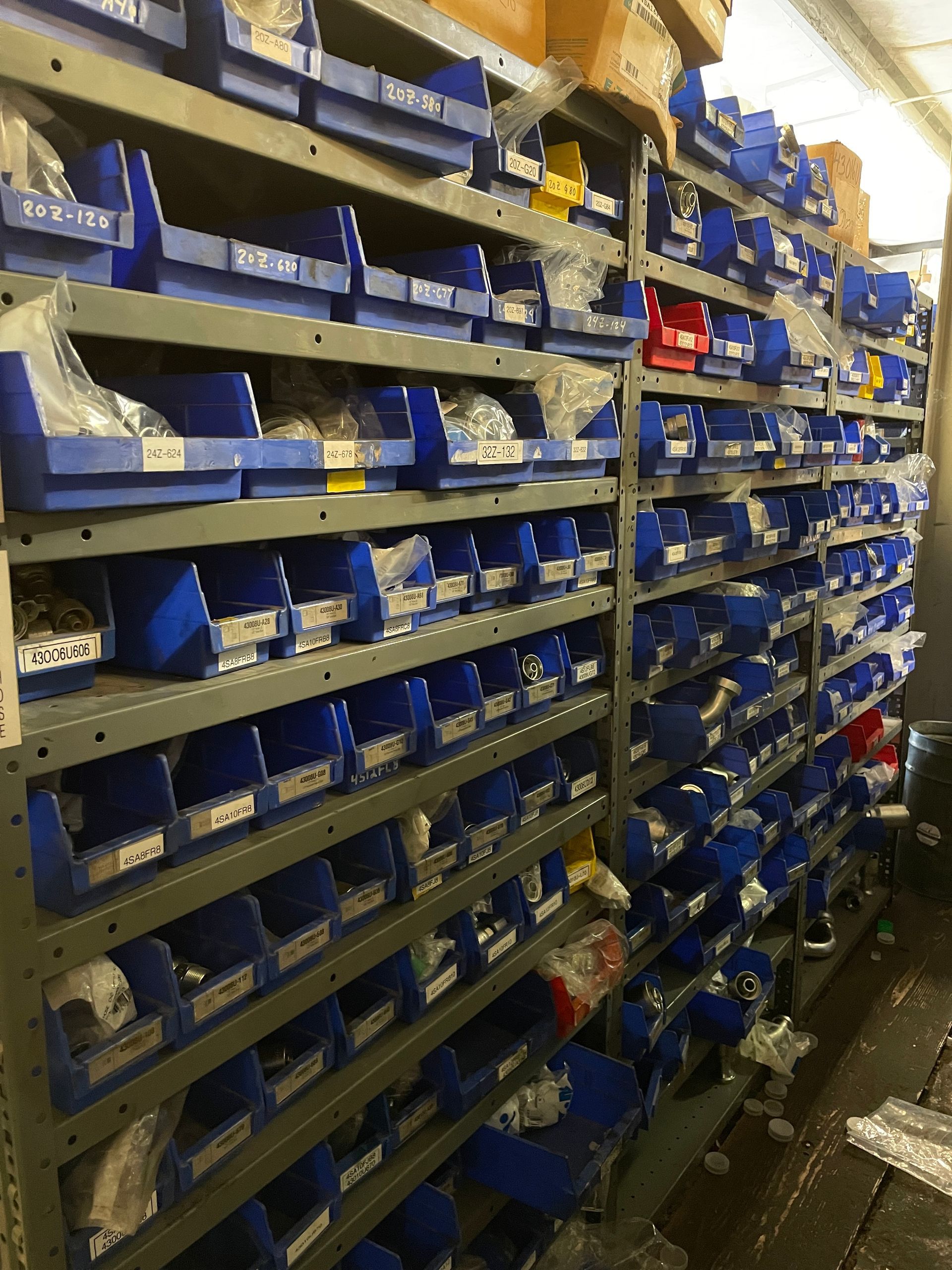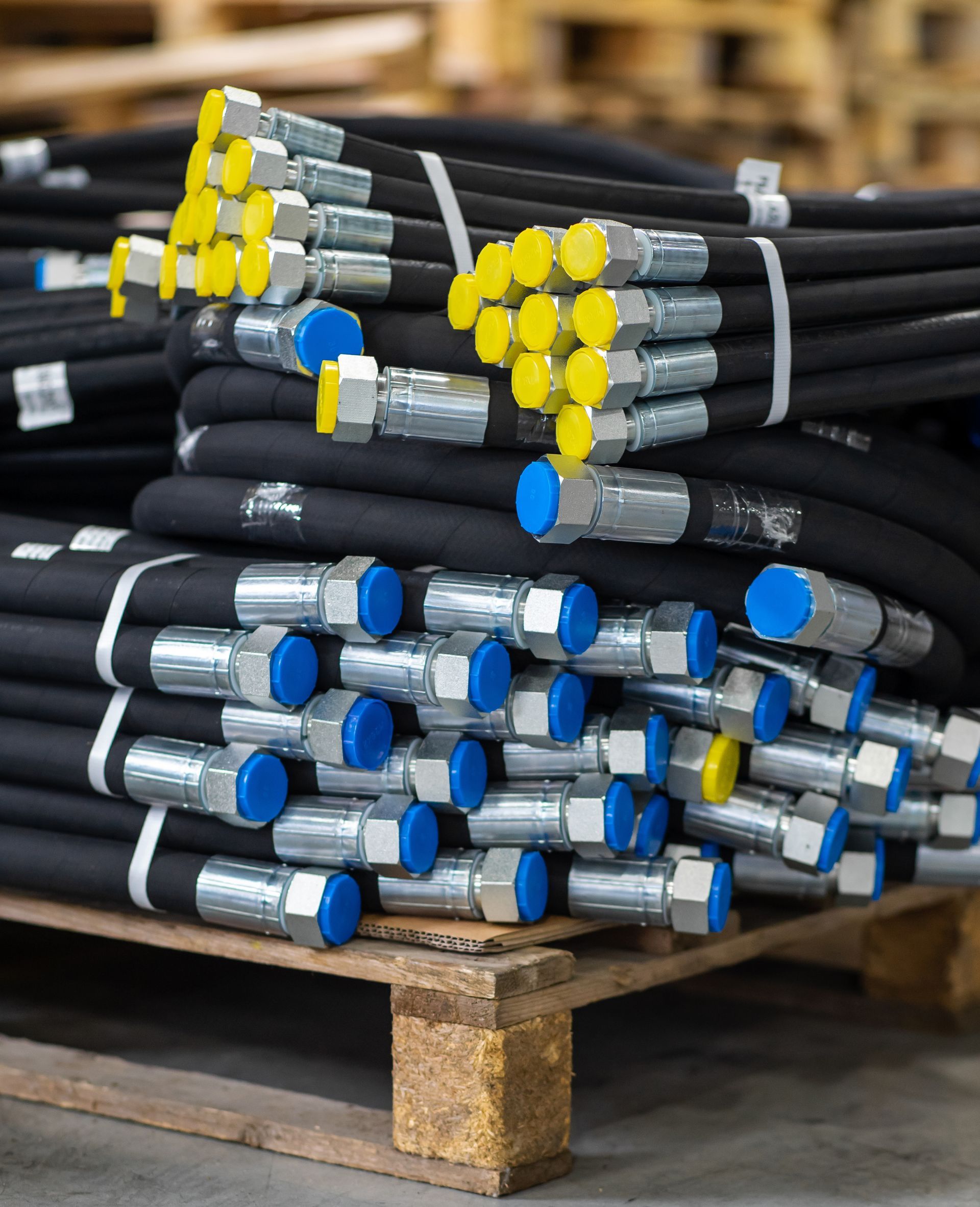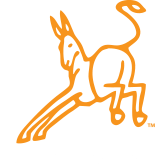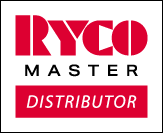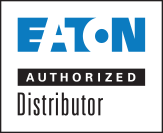ACTION SUPPLY BLOG
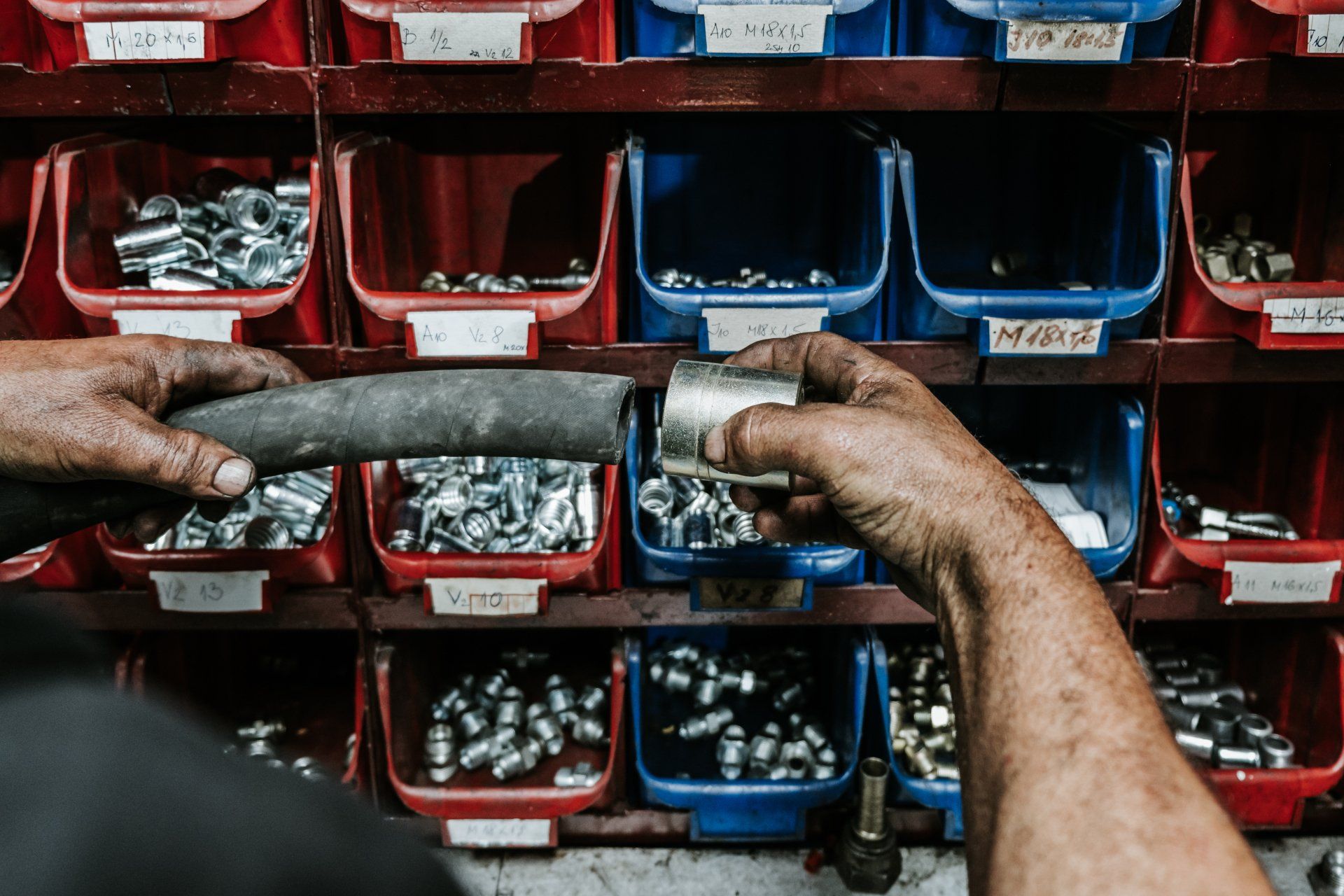
In the world of industrial supply, especially when it comes to hydraulic hoses and fittings, what truly sets a provider apart isn’t just product stock. It’s relationships . At Action Supply, we’ve built our business over four decades on more than inventory: we’ve built it on reliability, responsiveness, and customers trusting us as their go-to partner. The Local Partner Advantage Faster turnaround : Local on-site hose assemblies, quick access to inventory, and the ability to respond when downtime is unacceptable. We work hard to complete your projects with higher quality and fast turn around times. Better communication : You’re dealing with a team that knows your region, your industry, and your challenges—not a generic call center. Inventory you can count on : When your partner manages stock on-site or nearby, you’re less likely to face costly delays. Action Supply offers inventory management services to keep critical parts ready when you need them. Service & Support That Make the Difference Here’s how we add value for our customers year-round: Custom Hose Assemblies On-Site : We don’t just stock hoses; we build them to spec, on-site, matching exact lengths, fittings, and ratings so there’s no guess-work or field fabrication headaches. Consultation & Technical Guidance : Hydraulic systems are complex. We help customers select the right hose, fitting, and coupling for factors like pressure, fluid compatibility, abrasion, and environment. Speed When It Counts : Downtime kills productivity. Having a local partner means faster pick-up, faster delivery, and in many cases, faster problem resolution because we’re already on-site or nearby. Proactive Inventory Planning : From planned maintenance to emergency response, we partner with customers to anticipate needs rather than just react. A true partnership means fewer surprises. A Long-Term View: Why Trust Matters Relationships are built on consistency over time. At Action Supply, our “we’ve worked hard for over 40 years” mindset means we place value on being there for our customers today…and five, ten, twenty years down the road. That long-term presence gives customers the confidence to count on us for standard supply, for emergency replacement, and for growth scale-up. When you know your supply partner will show up, send the right part, understand your system, and back it with service, you’re not just buying hoses or fittings. You’re buying peace of mind. How to Make the Most of Your Supply Partner Here are a few actions to ensure your local supply relationship delivers maximum value: Treat them as part of your team : Share your upcoming projects, shutdown schedules, and maintenance plans with your supply partner. Engage early : Instead of reaching out only when a hose fails, loop in your supply partner during planning or design phases. Keep open communication : Share what matters to you (lead time, budget constraints, delivery windows) and let them tailor service accordingly. Leverage their expertise : Ask questions about alternatives, better materials, and long-term cost savings. In industrial operations, margins are tight, downtime is costly, and every component matters. At Action Supply, we believe relationships matter because when you win, we win. And when you’re up against the clock, facing tough specs, or dealing with complex hydraulic systems, you’ll appreciate having a partner who’s local, dedicated, and backed by decades of experience.

When uptime, safety, and fluid integrity matter, choosing the correct fitting is the difference between a reliable system and unexpected downtime. The right fitting ensures a leak-free seal, matches pressure and fluid compatibility, and simplifies serviceability in the field. Action Supply builds and manages custom hose assemblies daily and can help match fittings to your exact application. Material Selection: Match the Environment Material choice impacts corrosion resistance, strength, and cost. Stainless steel (316 where marine exposure or salt spray is present) offers excellent corrosion resistance and strength for structural or submerged fittings. Brass is economical and machinable, and performs well in many freshwater or general industrial applications, but can corrode faster in saline environments. Choose material based on fluid chemistry, temperature, and exposure to salt or corrosives. A Practical Checklist for Choosing Fittings Identify the media: hydraulic oil, freshwater, saltwater, chemical — materials and sealing change accordingly. Confirm pressure & temperature ratings: match fittings and hose to the system’s max working and burst pressures. Match thread type and size: NPT ≠ BSP — use thread gauges or manufacturer tables if unsure. Choose sealing method: metal-to-metal (37° JIC/AN), ORFS face-seal, or thread-seal (NPT + tape/compound). Account for serviceability: will techs need to disconnect often? Choose fittings that tolerate repeated assembly. Plan for corrosion: in marine or corrosive environments choose 316 stainless, bronze, or specially coated parts. Document and label: record part numbers, thread specs, and orientation to remove guesswork on replacements. Installation & Testing Tips Use the correct torque spec for the fitting type; overtightening can damage seals or distort threads. For ORFS, always replace O-rings during reassembly and inspect sealing surfaces for nicks. For pipe threads (NPT), use appropriate thread sealant or PTFE tape and apply properly (direction, number of wraps). Pressure-test new assemblies at the manufacturer-recommended proof pressure before returning equipment to service. When to Call the Experts at Action Supply If your job is complex (mixed standards on site, high-pressure hydraulic systems, or marine installations), bring the assembly to the shop or have Action Supply’s on-site team build and verify the assembly. We offer on-site hose assemblies, inventory management, and industry-grade fittings (including Eaton/Weatherhead hoses and couplings) so you get the right part and verified performance the first time. Call (281) 315-3841 or use our contact form to request on-site assembly or inventory support.

Spring is here, and that means longer workdays, increased demand, and unpredictable Gulf Coast weather. Whether you're in construction, industrial maintenance, or fleet operations, this is the season to get ahead of equipment maintenance before the heat, humidity, and workload take a toll. At Action Supply, we know downtime isn’t an option. That’s why we’ve put together this spring maintenance checklist to keep your equipment running efficiently, safely, and reliably all season long. 1. Inspect Your Equipment: Catch Issues Early The first step in spring maintenance is a full equipment inspection. Look for: Leaks or fluid loss – Check hydraulic lines, hoses, and seals for wear. Rust or corrosion – The Gulf Coast’s humidity speeds up deterioration. Apply protective coatings where needed. Tire & track wear – Construction sites and rough terrain cause excessive tread wear. Electrical connections – Moisture buildup can lead to short circuits or malfunctions. Pro Tip: Preventative maintenance is always cheaper than emergency repairs. Schedule routine inspections now to avoid costly downtime later. 2. Protect Against Corrosion & Rust The heat, salt air, and high humidity in the Gulf Coast accelerate rust and corrosion, which can weaken equipment and reduce efficiency. Be sure to: Apply anti-corrosion sprays to exposed metal parts. Store equipment properly when not in use to limit moisture exposure. Use high-performance lubricants to reduce friction and wear. Action Supply has a full selection of lubricants, protective coatings, and rust inhibitors to help extend the life of your equipment. Talk to our team for recommendations! 3. Keep Lubricants & Fluids in Check With rising temperatures, oil, grease, and hydraulic fluids work harder to keep machinery running smoothly. Check and replace: Engine oil – Prevent overheating & engine wear Hydraulic fluid – Ensure smooth, responsive operation Gear oil – Protect against friction damage Coolants – Keep engines from overheating in Gulf Coast heat Action Supply carries high-quality lubricants designed to handle extreme conditions. Stock up now before peak season hits! 4. Clean & Protect Your Equipment Spring cleaning isn’t just for homes—it’s essential for keeping heavy machinery, trucks, and tools in top shape. ✔️ Pressure wash equipment to remove dirt, debris, and buildup. ✔️ Clear air filters to improve engine performance. ✔️ Check radiators & cooling systems to prevent overheating. ✔️ Inspect and replace worn belts and hoses before they break. Pro Tip: A clean machine is an efficient machine. Regular maintenance extends the life of your equipment and improves safety. 5. Prepare for Spring Storms & Extreme Heat The Gulf Coast is known for sudden storms and extreme temperatures. Be prepared by: Storing backup parts and supplies in case of emergency repairs. Ensuring generators & backup power sources are operational. Keeping emergency safety gear stocked and accessible. Need help finding the right supplies? Action Supply has everything from industrial tools to safety gear to keep your crew prepared. Get Ready for a Productive Spring with Action Supply At Action Supply, we have the supplies, tools, and expertise to help you protect and maintain your equipment for peak performance. Call us today to stock up on lubricants, safety gear, and essential maintenance supplies before the season kicks into high gear. Stay ahead of the game—because downtime isn’t an option.

On November 8th, 2023, the US Bureau of Labor Statistics released its annual report on workplace injuries. Private industry employers reported 2.6 million nonfatal workplace injuries and illnesses in 2023. This report underscores the importance of preparing for workplace challenges, especially during the winter when injuries rise due to cold, winter weather, and slippery surfaces. Gulf Coast winters bring extreme temperature fluctuations, sudden cold snaps, heavy rain, and high humidity. High-quality personal protective equipment (PPE) and safety supplies protect against the various hazards these conditions present. Ensure your oil and gas workers have these items on hand to keep them safe and productive. Insulated and Weatherproof Jackets Sudden drops in temperature or prolonged exposure to cooler temperatures can impair a worker’s focus, dexterity, and reaction time. Thermal insulation maintains body warmth while waterproof coatings protect against rain and damp conditions. These prevent discomfort and the risks associated with wet clothing, such as hypothermia or reduced mobility. If your workers are often near heavy machinery or fleet vehicles, consider looking for high-visibility jackets with ANSI-compliant reflective strips. They are designed to remain effective even in wet or overcast weather. Workspace-Specific Insulated Gloves Choose gloves that combine the features your workers need in their tasks. You may need gloves suitable for different responsibilities or areas of the workplace. Some features to consider include: Chemical-resistant gloves protect against hazardous materials like acids and solvents. Insulation keeps hands warm, preventing cold-related injuries that impair grip and coordination. These are essential for workers who will work outdoors or in cold indoor areas for extended periods of time. Shock insulation is good for those who work near machinery and electrical components. Anti-vibration gloves reduce the harmful effects of vibration on hands and arms while using power tools or machinery. Cut resistance protects against sharp objects when at work. Good cut protection is considered anything rated A3 and lower. Flexible designs ensure dexterity for precision tasks like repairs and maintenance. Choosing the right gloves will help keep your workers safe from winter weather and the unique challenges of their workplace. High-Traction, Insulated Boots Even without rain or sleet, temperatures can dip low enough to freeze dew and condensation, creating near-invisible slippery surfaces. Boots should feature slip-resistant soles with high traction scores, designed to grip wet, oily, or icy surfaces. Look for acid- and chemical-resistant materials in boot construction to prevent damage and ensure durability in harsh environments. Reinforced-toe options can protect workers from falling objects and other hazards. Insulation prevents cold-related numbness that can affect balance and safety. Hand Sanitizer for Workplace Hygiene and Safety In colder months, workers may be less inclined to wash their hands regularly due to limited access to warm water at job sites. Hand sanitizer provides a convenient alternative to reduce the spread of germs and maintain cleanliness. Choose sanitizers with at least 60% alcohol for maximum effectiveness against bacteria and viruses. Non-greasy formulas are ideal to avoid slippery hands when using tools or operating equipment. Station hand sanitizer dispensers near fleet vehicles, tool storage areas, and break rooms to encourage frequent use without disrupting workflows. Essential Items for First Aid Kits to Treat Cold-Related Injuries Cold-related injuries are rare but possible during Gulf Coast winters, especially when workers are exposed to wet and chilly conditions for extended periods. Make sure your first aid kits are equipped for these during the winter months. Thermal Blankets . Compact, heat-reflective blankets provide immediate warmth to prevent or treat hypothermia in exposed workers. Heat Packs . Disposable or reusable heat packs help warm extremities like fingers and toes. Frostbite Cream or Gel . Specialized treatments for frostbite help minimize damage while waiting for professional medical attention. Cold Weather Bandages . Adhesive bandages that stick even in cold or damp conditions will help protect cuts and scrapes. Extra tape and flexible gauze rolls are also recommended in case of slips and falls. Regularly inspect and replenish first aid kits to ensure all items are in good condition and ready for use. Fire Extinguishers for Heated Areas Indoor and outdoor heating equipment increases fire risk during the colder months. Having the right extinguisher in the right place can make a huge difference in the severity of a fire incident. Ensure extinguishers are rated for the types of fires common in heated areas. They fall under five classifications based on the type of fire they are best suited for. Class A for non-metallic materials like wood, paper, cloth, trash, and plastics Class B for flammable liquids like gasoline and oils. Class C for electrical fires, often caused by space heaters or malfunctioning equipment. Class D for Metal fires involving magnesium, sodium, potassium, and sodium-potassium alloys Class K for fires involving cooking oils and deep fryers. Position fire extinguishers within easy reach of heaters, furnaces, or other fire hazards to ensure workers and responders can react quickly in an emergency. Action Supply Provides High-Quality PPE Gear to Fit Your Needs We are uniquely positioned to assess your safety concerns and ensure you have the right safety equipment for the job. Contact us today to see how we can help you reduce winter workplace injuries with the right PPE gear.
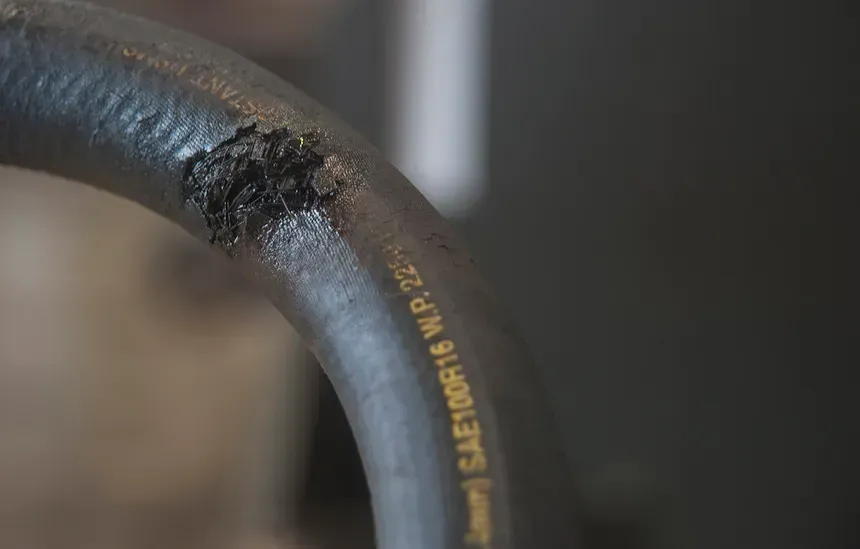
Moisture can cause corrosion, weaken the hose structure, and eventually lead to costly system failures. Here are some of the risks of moisture damage and some actionable steps to protect your hydraulic hoses in the Gulf Coast area. Why Moisture Is a Threat to Hydraulic Hoses in the Gulf Coast Region Water enters your hydraulic system through cracks, weak connections, humidity, storm damage, and other factors, leading to various issues. Some notable issues include Corrosion of Metal Components. Moisture causes rust and corrosion on metal parts like fittings and reinforcements, weakening the hose structure and leading to failures. Degradation of Hose Material. Moisture can work its way into cracks and scratches on the hoses, causing swelling, softening, or widening cracks. These issues can lead to leaks or ruptures. Water Contamination in Hydraulic Fluid. Moisture entering the system can contaminate hydraulic fluid, reduce lubrication, create rust inside the components, and cause premature wear of critical parts. Freezing Risk. In cooler conditions, moisture inside hoses can freeze, leading to cracks and clogs within the hose system. Microbial Contamination. Warm, moist conditions can promote bacterial and fungal growth inside hoses, leading to biofilms that clog systems and degrade components. Signs of Moisture in Hydraulic Hoses Detecting moisture damage early can save your business from costly repairs or downtime. Look for these common signs of moisture-related issues during visual inspections. Cloudy or Milky Hydraulic Fluid. When water is present in your hydraulic fluid, it can appear cloudy, milky, or discolored. Corrosion on Metal Parts. Look for rust or corrosion on metal fittings, couplings, or any exposed hydraulic system parts. This can indicate that moisture has entered the system. Deformations in the Hose. Moisture can cause the inner lining of hydraulic hoses to swell or soften, leading to bulging, deformation, or changes in hose flexibility. If these deformations freeze in cold weather, they can further weaken the hose and cause it to burst. Unusual Operating Temperature. Excessive moisture in the hydraulic fluid can reduce its heat transfer capabilities, causing higher temperatures, changes in viscosity, and other issues. Foaming or Bubbles in Fluid Reservoir. When water and oil flow through the system together, they emulsify (break into tiny droplets). If this occurs, it will look like foam or visible bubbles in the fluid reservoir. Preventing Moisture Damage in Hydraulic Hose Systems Premature wear and moisture damage can be prevented without expensive system changes. Here are a few practical things you can do to extend the life of your hydraulic hoses. Store Equipment Properly Keep your hydraulic hoses and equipment covered or in dry, sheltered environments to reduce moisture exposure. If you store your inventory outside, consider using protective coverings like tarps or wraps. If your area is prone to flooding, make sure your inventory is stored above ground level and avoid places where water could pool around them. Regularly Inspect Hoses and Fittings Check hoses for cracking, rust, or leaks after storms or excessive seasonal temperature changes. Make sure to inspect the fittings and connections in the process. Install a Hydroscopic Breather Water can enter hydraulic systems through the reservoir breather during fluid changes. Switching a standard breather cap to a hygroscopic breather prevents this by filtering out particles and absorbing moisture from the air. Check For Proper Hose Installation Improper installation leaves your hydraulic hoses vulnerable to moisture damage. Be sure that your hoses are routed correctly and that fittings are securely tightened. If you need help with the proper parts or installation techniques, consult an expert who can help optimize your system. Action Supply Can Help You Optimize Your Hydraulic Systems Moisture damage is just one of many issues that can affect your hydraulic hose systems. We will recommend the right oil to handle seasonal temperature fluctuations, the right fittings to avoid leaks and issues, and even provide inventory management services to ensure you have the parts you need. Contact us today for your custom solutions this season.
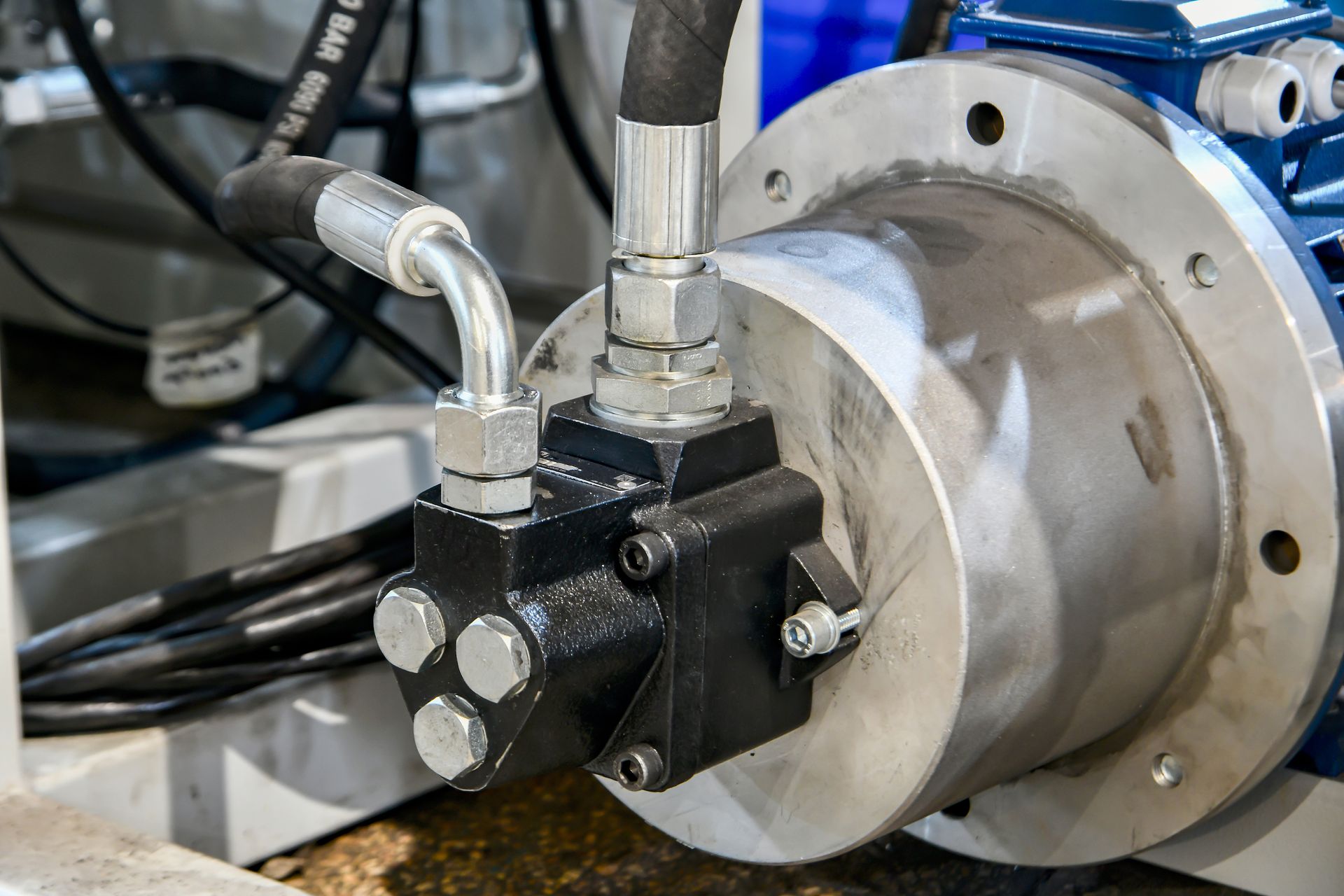
Despite the growing interest in Electronic Braking Systems (EBS), Anti-lock Braking Systems (ABS) continue to be the preferred choice for heavy-duty trucks due to their reliability. Here are some common mistakes made during air brake system inspections and adjustments with tips on how to Neglecting Regular Inspections Regular inspections are critical to detect wear and tear before they become costly breakdowns. Procrastinating on this critical task can lead to accidents, injuries, and other risks. You should visually inspect the air brake system every three months and more thoroughly on a schedule according to the manufacturer’s recommendations. Plan for extra visual inspections if your fleet is exposed to extreme weather, severe temperatures, or other environmental hazards. Improper Adjustment of Brake Components Improper adjustments can occur due to a lack of understanding of the correct adjustment procedures or the use of incorrect tools. For example, an imperfect slack adjuster can lead to excessive brake shoe wear or inadequate braking force. Make sure your crew follows the manufacturer's guidelines and uses the right tools for adjustments and repairs. A minute saved with a rushed job can cost many days' worth of issues later. Ignoring Manufacturer Specifications Each brake system has specific manufacturer specifications and guidelines. Doing things like using incorrect brake linings or failing to maintain the recommended air pressure can lead to decreased performance and increased risk of brake failure. Always refer to the manufacturer’s manual and adhere to the specified maintenance practices.If you are unsure if a substitute part will work for your fleet vehicle, contact hardware supply experts to discuss your options. Failing to Check Supporting Hoses and Valves Air leaks in the brake system can severely affect braking performance. Common areas where leaks might occur include the air hoses, valves, and connections. During inspections make sure to: Check for cracks, bulges, and other deformities in the hoses Gently pinch the hoses to check for blisters and soft spots that indicate internal damage Check joints, valves, and connectors for signs of corrosion and loose connections Take care that all tubes and parts are clean during repairs and replacements. Any debris that makes its way in is not likely to come back out If you suspect a leak, cover the hose with soapy water and look for bubbles. Replace any faulty parts early on to avoid more costly repairs later. A customized inventory management service can help you avoid long back orders and delays. Overlooking the Air Dryer and Filters The air dryer and filters play a critical role in maintaining the quality of the air within the brake system. Moisture and contaminants in the air can cause corrosion and damage to the brake components, especially in humid areas like the Gulf Coast. The staff of Fleet Magazine recommend, “Drivers and fleets should always monitor the quality of the air in their service tanks to ensure air dryers are functioning properly. If excessive moisture—or oil mixed with water—is present in an air system, the air dryer’s cartridge may need to be replaced.” Regularly checking and replacing the air dryer cartridge and filters can prevent moisture buildup and ensure the longevity of the brake system. Refer to the manufacturer’s appropriate data sheet for the best intervals. Let Action Supply Help You Maintain Your Fleet Whether you need the gold standards in fleet maintenance parts or robust inventory management, we are committed to providing you with the highest quality customer care. Our inventory experts will work hard, earn your trust, and help you get the job done right. Contact us today to discuss your fleet maintenance needs.

